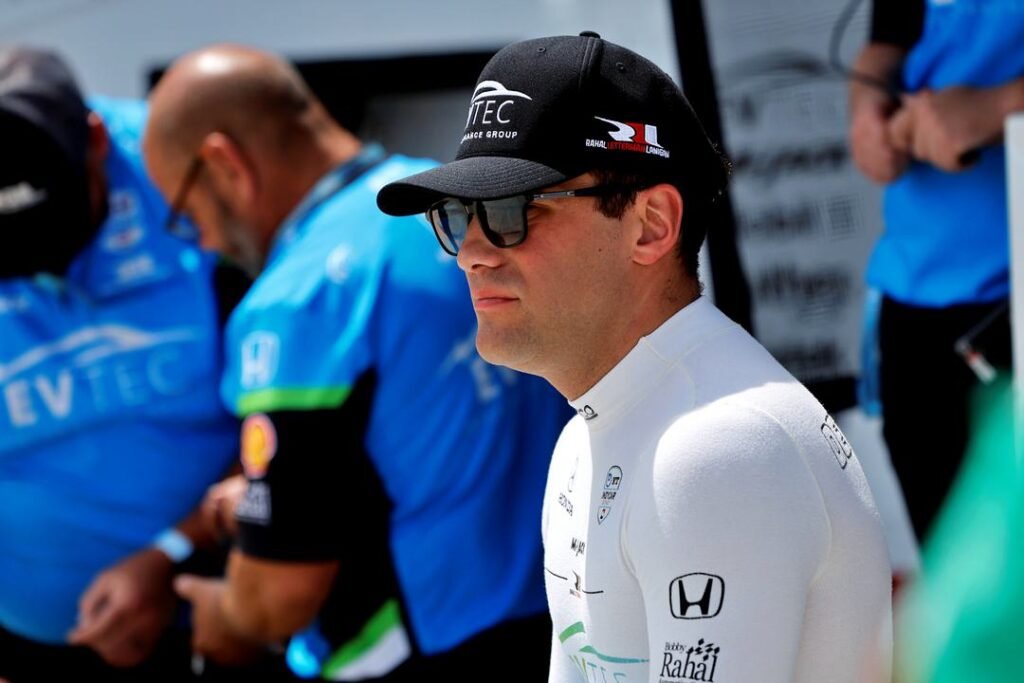Devlin DeFrancesco arrives at the Detroit Grand Prix with renewed confidence following one of his strongest IndyCar performances to date at the Indianapolis 500. The Canadian driver, now in his first season with Rahal Letterman Lanigan Racing, ran competitively throughout the month of May and is eager to translate that form to the demanding Belle Isle street circuit.
Having previously raced at Detroit with Andretti, where he recorded one of his best IndyCar finishes, DeFrancesco believes his new team environment provides the foundation for continued progress.

The execution factor
“You know, making sure we execute is very important,” DeFrancesco explained when discussing his goals for the Detroit weekend. “Our pace has been strong generally at most events so far this year, but execution’s kind of been the issue in the Achilles heel. Teams had a very good car here last year that were strong with Christian [Lundgaard].”
The reference to Christian Lundgaard highlights the potential that exists within the RLL organisation. Lundgaard’s strong performance at Detroit in 2024 demonstrated the team’s capability to field competitive machinery at the challenging street circuit, providing DeFrancesco with both confidence and a benchmark for his own aspirations.
“I know kind of why we were strong, and I think this track will play into my wheelhouse a little bit, so making sure we execute is critical,” DeFrancesco added, suggesting that his understanding of what made the team successful previously could be key to unlocking his potential at the venue.
Physical and mental preparation
The transition from the high-speed oval of Indianapolis Motor Speedway to the tight confines of Belle Isle represents one of IndyCar’s most dramatic contrasts. DeFrancesco acknowledges that this shift requires a complete recalibration of both physical and mental approach.
“Well, it’s going to be bumpy. Wheels are going to be heavy,” DeFrancesco noted when asked about adapting to Detroit’s unique challenges. “Bumpy, physical, weekend, generally, as usual as most IndyCar street courses are. You know, making sure we qualify as high up as we can, but as well making sure we recover quite well at night to make sure we’re fresh for the next days.”
This pragmatic approach to race weekend preparation reflects the demands of street circuit racing, where the physical toll of wrestling an IndyCar around unforgiving concrete-lined streets can accumulate quickly across multiple sessions. The double-header format at Detroit only amplifies these challenges, making recovery and preparation between sessions crucial for maintaining performance throughout the weekend.
Navigating the chaos
Detroit’s reputation for producing dramatic racing is well-established, with the hairpin at Turn 3 serving as a particular flashpoint for incidents. Last year’s race featured eight cautions, with nearly half of them originating from the infamous corner that has claimed numerous victims over the years.
When asked about his strategy for avoiding the carnage that often unfolds at the hairpin, DeFrancesco’s response was characteristically straightforward: “Keep your nose clean. That’s really all you can do. Keep your nose clean, good in, good out, and try to avoid the chaos.”
This measured approach reflects the experience he’s gained through his IndyCar career. Understanding when to be aggressive and when to exercise patience can be the difference between a strong finish and an early retirement on the unforgiving streets of Belle Isle.
The Canadian driver’s realistic assessment of the challenges ahead, coupled with his focus on execution rather than outright speed, suggests a mature approach that could serve him well on Belle Isle’s demanding layout.



